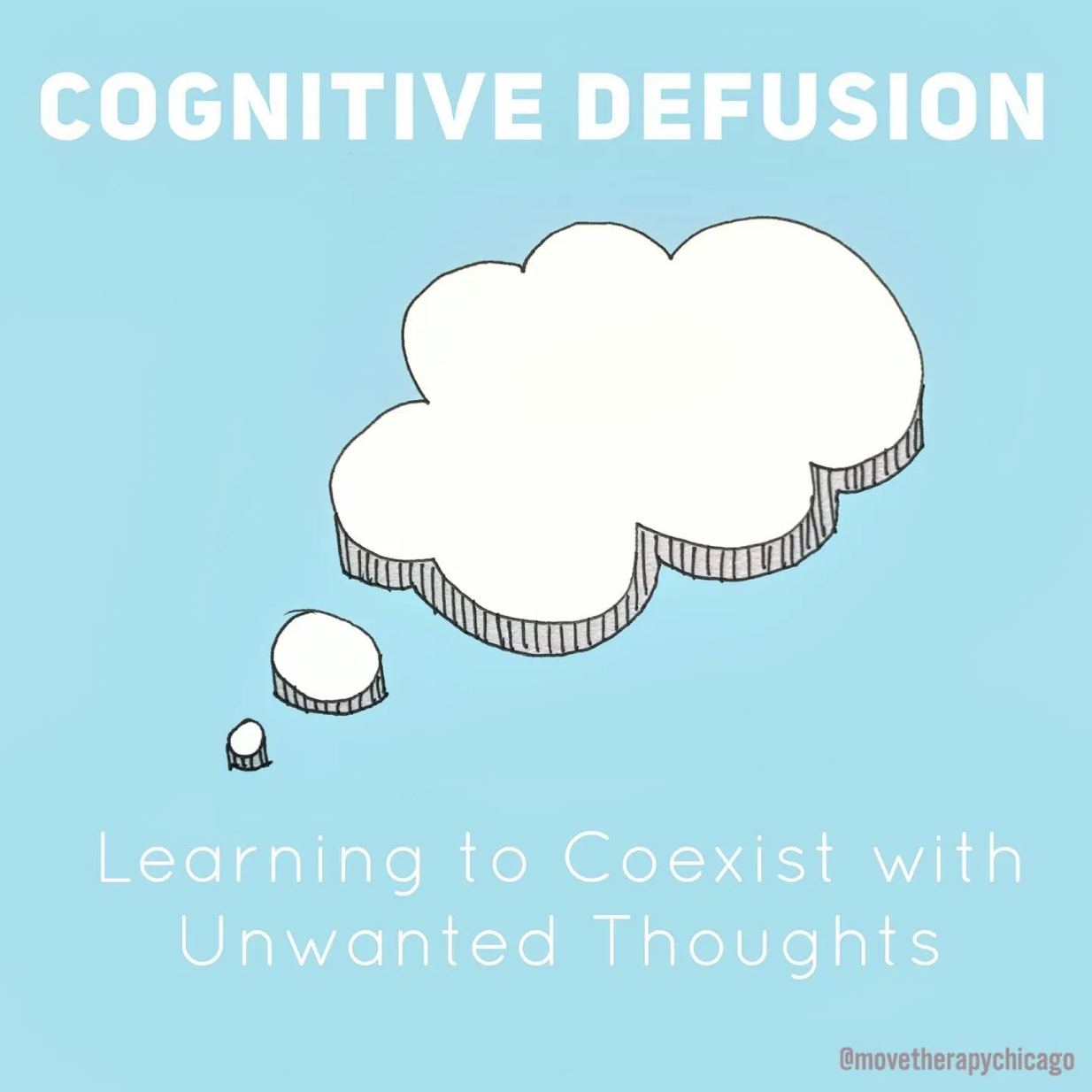Can you think of a time when you didn’t have any thoughts floating around in your mind? A time when your mind was completely still with no disruptions? As humans, we all have thoughts – All day, our minds are constantly going. We often have a tendency to get all caught up in our thoughts, to accept our thoughts as truths, to believe our thoughts fully. This getting all caught up has a name – Cognitive fusion.
When we are fused with our thoughts, we will often try anything to avoid, suppress, or get rid of unwanted thoughts. Have you ever found yourself trying desperately to make a thought go away, only to find that it is all you can think about? What if I told you not to think about pink elephants? I am willing to bet that you pictured a pink elephant just now!
Luckily, there is a way to alter the function of our thoughts by changing the ways that we interact with them. This is called cognitive defusion. Russ Harris, renowned author and trainer of Acceptance and Commitment Therapy (ACT) defines cognitive defusion as “learning to “step back” and separate or detach from our thoughts, images, and memories”. The purpose of cognitive defusion is to observe our thoughts as what they are, and to hold them lightly versus firmly grasping to them.
When to Use Defusion:
- When the chatter of your mind functions as a barrier and keeps you from being present in your life
- When you find that your thoughts are spiraling, and you are having difficulty quieting them
- When you are faced with a thought that is uncomfortable, and you experience the urge to avoid or suppress the thought
How to Practice Defusion:
Create Distance From The Thought
Notice the thought that you are having, then add “I am having the thought that” to the beginning of the statement. This will allow you to create distance between yourself and the thought, and recognize it for what it is: a thought, and not your truth. Example: “I am having the thought that I am an awful person.”
Mental Appreciation
Offer thanks toward your mind, and show appreciation for the thoughts that it produces. Example: “Thank you, brain, for that thought.”
Passengers On a Bus
You are in the driver seat, while the passengers (your thoughts) are shouting loudly, criticizing your driving, or distracting your ability to operate the vehicle. You can allow this to happen, while also paying attention to the road ahead. Example: “There are a lot of loud passengers on this bus, but I am going to keep driving.”
Sing Your Thoughts
Instead of allowing your thoughts to bounce around in your mind, begin to sing them aloud. You can sing them to the tune of “Happy Birthday”, or make up your own song. You may also imagine that your thoughts are spoken in the voice of your favorite celebrity, cartoon character, or news anchor (try Matthew McConaughey, Bugs Bunny, or Al Roker). To take this one step further, add physical movement such as jazz hands or spinning in circles. While the thoughts may not go away completely, you may find that you achieved separation or distance from your thoughts.
Source: Act Made Simple – Russ Harris

I am working on the book “Get out of your mind and into your life”. I am working with my A/A sponsor. Reading this article helped me to have a better understanding of it
Sorry. This helped me have a better understanding of cognitive fusion. Thank you